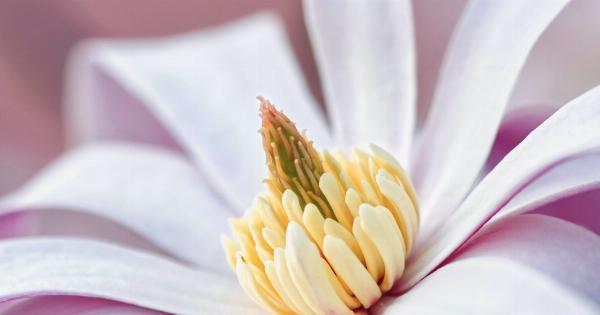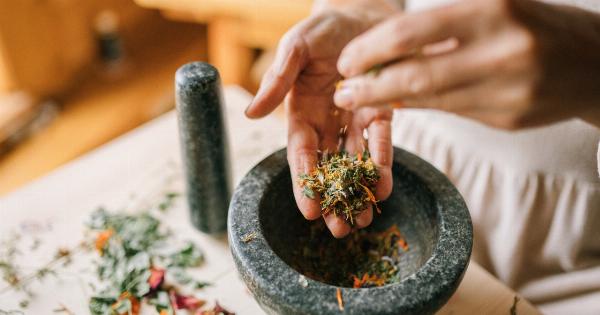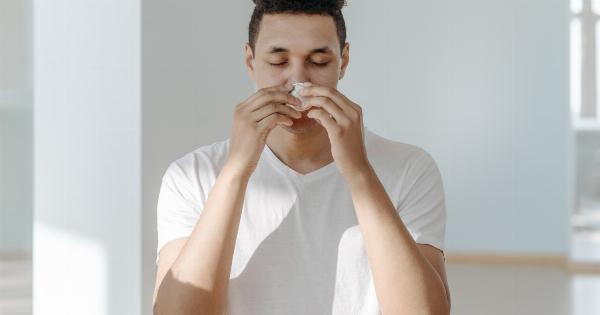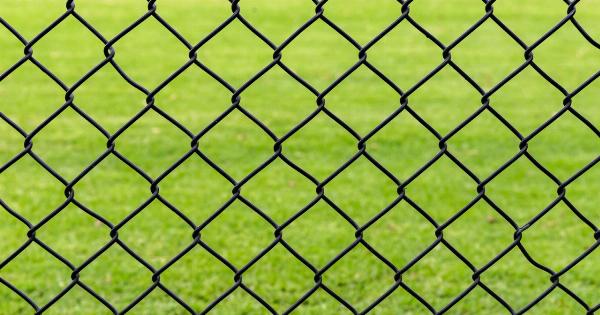Spring is a beautiful time of the year when nature comes alive with vibrant colors, sweet scents, and blooming flowers. However, for many, it also marks the onset of seasonal allergies.
The sudden increase in pollen and other allergens can wreak havoc on allergies, causing countless sneezing fits, itchy eyes, and runny noses. If you find yourself struggling with spring allergies year after year, it’s essential to understand your triggers to better manage your symptoms.
In this article, we will explore the most common spring allergy triggers and share tips on how to effectively deal with them.
1. Pollen
Pollen is the most prevalent allergen during the spring season. Trees, grasses, and weeds release tiny pollen grains into the air to fertilize other plants of the same species.
When these pollen grains come into contact with sensitive individuals, they trigger an allergic reaction. Common symptoms include sneezing, congestion, itchy eyes, and a runny nose. To minimize exposure to pollen:.
- Check the daily pollen forecast and limit outdoor activities on high pollen days.
- Keep windows closed and use air purifiers with HEPA filters indoors.
- Wear a hat and sunglasses to shield your face when spending time outdoors.
- Take a shower and change clothes after coming indoors to remove any lingering pollen.
2. Mold
Mold spores thrive in damp and humid environments, making spring an ideal time for their growth. Outdoor mold can be found in decaying leaves, soil, and compost piles, while indoor mold can be found in basements, bathrooms, and kitchens.
Mold allergies can cause symptoms similar to pollen allergies, including sneezing, coughing, and respiratory issues. To prevent mold allergies:.
- Keep humidity levels below 50% in your home by using dehumidifiers.
- Fix any leaks or water damage promptly to prevent mold growth.
- Avoid raking leaves or working with compost piles if you are sensitive to mold.
- Clean and dry areas prone to mold regularly, such as bathroom tiles and shower curtains.
3. Dust Mites
While dust mites are present all year round, they can be particularly troublesome for allergy sufferers during the spring when homes are opened up for fresh air.
Dust mites thrive in warm and humid environments, living in bedding, upholstered furniture, and carpets. Symptoms of dust mite allergies may include sneezing, itching, and a stuffy or runny nose. To reduce exposure to dust mites:.
- Use allergen-proof covers for mattresses, pillows, and duvets.
- Wash bedding and stuffed toys regularly in hot water above 130°F (54°C).
- Vacuum regularly with a HEPA-filtered vacuum cleaner to minimize dust mites in carpets and furniture.
- Keep humidity levels low and ensure proper ventilation in your home.
4. Pet Dander
If you have a furry friend at home, chances are their shedding can contribute to your spring allergies. Pet dander, which consists of tiny flecks of skin and hair, can trigger allergic reactions in sensitive individuals.
Symptoms include sneezing, coughing, wheezing, and itchy skin. To minimize the effects of pet dander:.
- Keep pets out of bedrooms and off furniture, especially upholstered items.
- Wash your hands after petting or playing with animals.
- Regularly groom and bathe your pets to reduce dander.
- Consider using air purifiers with HEPA filters to remove pet allergens from the air.
5. Tree Pollen
During springtime, trees release large amounts of pollen, making it a major allergy trigger for many individuals. Common tree allergens include oak, birch, cedar, maple, and pine.
Symptoms of tree pollen allergies can range from mild to severe, and may include itchy eyes, nasal congestion, and sinus pressure. To combat tree pollen allergies:.
- Identify and avoid specific trees that trigger your allergies.
- Keep windows closed and use air conditioning to filter out pollen indoors.
- Wear a mask while gardening or participating in outdoor activities.
- Consult an allergist for specific allergy tests and potential treatment options.
6. Grass Pollen
Grass pollen is another major culprit of spring allergies. Common grasses that produce pollen include Bermuda grass, Timothy grass, Kentucky bluegrass, and ryegrass.
Grass pollen allergies can cause symptoms similar to tree pollen allergies, such as sneezing, itchy throat, and watery eyes. To minimize exposure to grass pollen:.
- Avoid mowing the lawn or being near freshly cut grass.
- Wear a mask and gloves when working on the lawn or gardening.
- Change clothes and shower after being outdoors during high grass pollen periods.
- Consider allergy shots or medications recommended by your healthcare provider.
7. Weed Pollen
Weeds, such as ragweed, lamb’s quarters, pigweed, and plantain, release pollen into the air during the spring and fall seasons. Weed pollen allergies can cause severe symptoms and significantly impact your quality of life.
Common symptoms include sneezing, itchy eyes, and a runny nose. To cope with weed pollen allergies:.
- Stay indoors during peak pollen times, usually late morning and early afternoon.
- Keep windows closed and use air purifiers with HEPA filters indoors.
- Wear a pollen mask if you need to do outdoor activities, such as gardening or yard work.
- Consult an allergist for personalized treatment options, including allergy shots.
8. Airborne Irritants
In addition to pollen and mold, there are several other airborne irritants that can worsen spring allergies. These irritants include vehicle exhaust, industrial pollutants, smoke, and strong chemical odors.
They can irritate the respiratory system and exacerbate allergy symptoms. To reduce exposure to airborne irritants:.
- Avoid areas with heavy traffic or industrial pollution.
- Keep windows closed and use air purifiers with activated carbon filters to trap irritants.
- Choose fragrance-free and hypoallergenic cleaning products.
- Avoid smoking or being around people who smoke.
9. Fresh Flowers
While flowers are visually appealing and a popular springtime gift, their pollen can trigger allergies in susceptible individuals.
Flower pollen is usually not wind-dispersed like tree or grass pollen, but it can still cause symptoms when directly exposed to. Symptoms may include sneezing, nasal congestion, and itchy eyes. To enjoy flowers without aggravating your allergies:.
- Opt for low-allergenic flowers such as roses, tulips, or daffodils.
- Keep fresh flowers in well-ventilated areas, away from bedrooms.
- Consider using artificial flowers or plant-based air purifiers instead.
- Wash your hands thoroughly after handling flowers.
10. Reevaluate Medications
If you have been taking over-the-counter allergy medications for your spring allergies without relief, it is advisable to reevaluate their effectiveness.
Antihistamines, decongestants, and nasal sprays can all provide temporary relief, but they may not be suitable for everyone or provide long-lasting relief. Consult with your healthcare provider to explore alternative options, such as prescription-strength medications or allergy shots to manage your symptoms effectively.
In Conclusion
Spring allergies can put a damper on your enjoyment of the season, but by understanding your triggers and taking proactive measures, you can minimize the impact of allergies on your daily life.
Be informed about the allergens prevalent in your environment and follow the tips outlined in this article to control and prevent symptoms. Remember, consulting with an allergist can provide personalized guidance and treatment options tailored to your specific needs. With proper management, you can embrace the beauty of spring without the discomfort of allergies dictating your every move.






























